


Graduate work:

Article
Abstract
1. GSM data transfer technologies overview
2. GSM speech coding
3. Results of the research
Conclusions
References
An evolution of energy power accounting systems has made the next step forward, new requirements are introduced: in any case the customer shouldn't participate in the process of accounting. It simplifies a control and eliminates all human-specific errors.
The most progressive energy accounting system use GSM network for data transmission because if offers an opportunity of creating widely distributed systems.
Scientific research essence
Most of the commercial energy accounting systems are build with a specialized data transfer technologies, offered by GSM network, such as SMS,CSD,GPRS. All of then have certain limitations, described below.
GSM network offers the most stable connection and fixed time-slots count for voice packets - so the main direction of the research work is generating a speech-like signal, able to carry digital information, for passing it through the GSM voice channel.
The graduate work purpose
To develop a method for digital information to be passed through specialized channel, optimized for spoken speech transmission.
The main idea of the work
a)any signal with certain level of redundancy can care the information
b)for signal to pass the transmission channel it must fulfill it's pass band requirements
In our case the signal is a synthesized speech and the transmission channel is a GSM network voice channel.
GSM data transfer technologies overview
Nowadays GSM is on of the most popular network of mobile communications, it offers four main digital information transmission technologies:
- CSD - Circuit Switched Data
-HCSD - High Speed Circuit Switched Data
-GPRS - General Packet Radio Service
-EDGE - Enhanced Data rates for Global Evolution
GPRS and EDGE technologies, as practice shows, are not acceptable for system requiring stable connection: the priority of data packets is lower than speech packet's one, so latter data has much more chances to pass during a high load of the base stations.
Opposite to GPRS/EDGE, CSD/HCSD request is much like speech packet request - time slots are granted with the same priority, so connection is quite stable and predictable. The main limitation of CSD transfer usage is it's cost.
Of course, transferring data through a speech channel cannot be as fast as for specialized data channels, but it has a number of advantages: connection is stable and predictive, voice calls are quite cheap.
GSM 06.10 vocoder
There are three ways to encode speech: waveform coding, parametric coding and hybrid coding, they differ a lot from each other, but their common goal is to achieve good compression rate without significant degration of speech quality. Theses two tasks cannot be accomplished at once: higher speech quality requires higher bit rates and vice versa lower bit reates can be achieved only by removing certain components of speech signal causing it's quality loss. The diagram of speech quality for different encoders and corresponding bit rates they require is shown in the fig. 1.
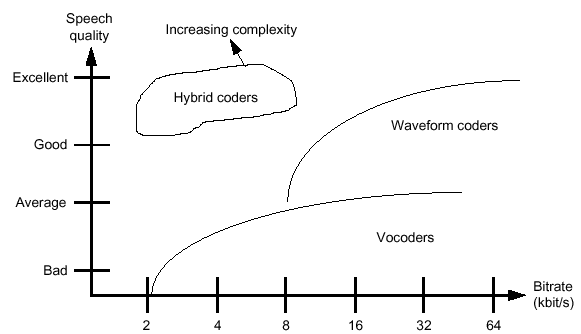
Figure 1 – Speech quality and required bit rate for vocoders, waveform and hybrid coders
GSM network utilizes one of the hybrid family coders, which has an acceptable speech quality versus moderate channel bit rates.
According to the GSM 06.10, speech coding has three main stages:
- pulse-code modulation
- speech coding
- channel coding
Pulse-code modulation
The analog input signal is sampled at a rate of 8000 samples/s and quantized with a resolution of 13 bits, this corresponds to a bit rate of 104kbit.
Speech coding
A simplified block diagram of GSM speech coder is shown in fig.2, it uses the speech compression method known as Regular Pulse Excitation - Long-Term Prediction - Linear Predictive Coder (RPE-LTP). Speech data arrives in blocks of 160 samples at the input of the coder (20 ms), the preprocessing block removes DC portion of the signal and linearizes speech spectrum with a premphasize filter to redistribute equivalently a mean prediction error over the signal spectrum. The preprocessed speech data is run through LPC filter, which reduces the dynamic range of a signal; reflection coefficients are calculated during this step. LTP is based on speech data from previous and current blocks - four parameters are calculated. The resulting difference signal is passed on the RPE coder.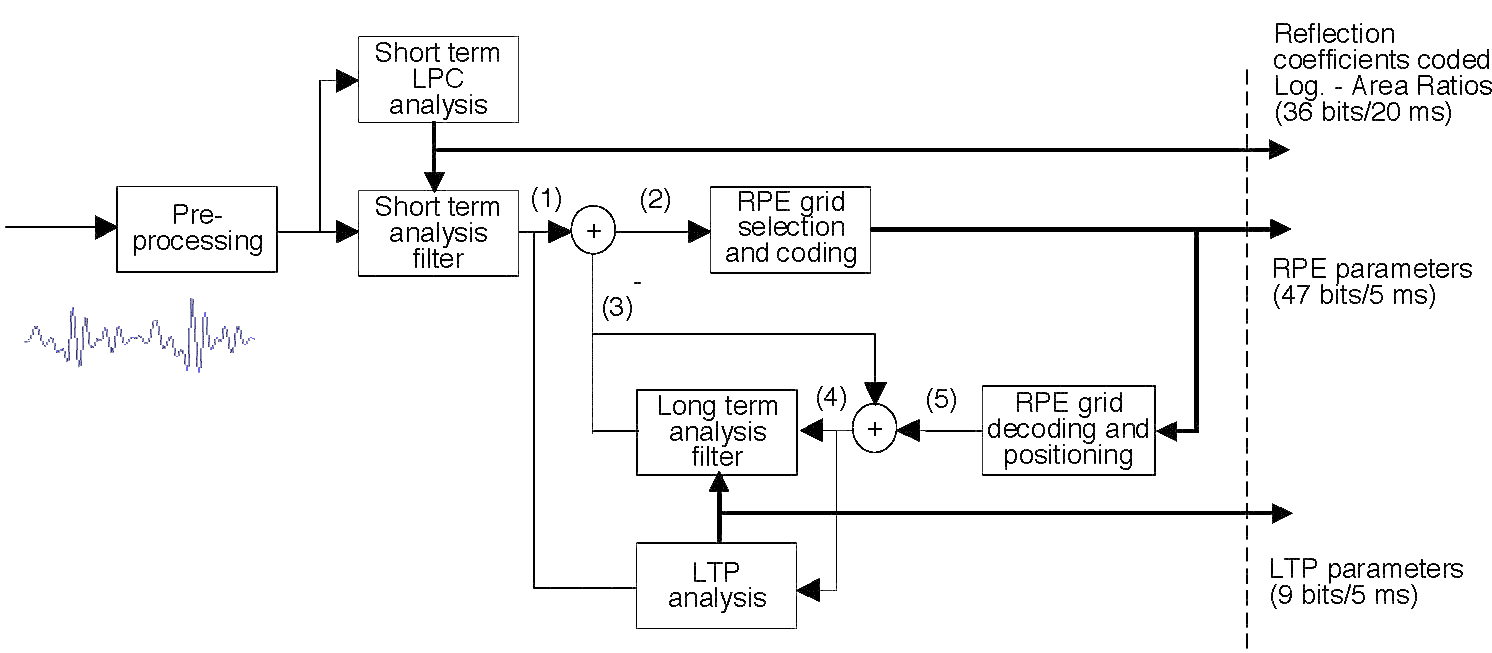
Figure 2 – Simplified block diagram of GSM speech coder
(animation: 36K, 8 frames, 5 cycles; refresh a page to start)
LPC - Linear Predictive Coder
LPT - Long Time Prediction
RPE - Regular Pulse Excitation
Channel coding
Channel coding enables detection and correction of transmission error, a combination of three procedures is used: block coding, convolutional coding(fig. 3) and interleaving (fig. 4).
Channel coder uses 260 bits passed from the vocoder and converts them to 456 bits containing an error correction redundancy information.
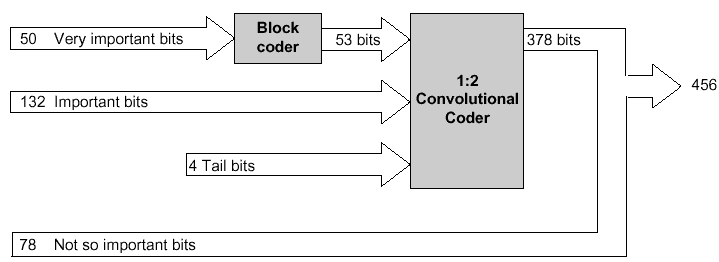
Figure 3 – Block diagram of channel coding
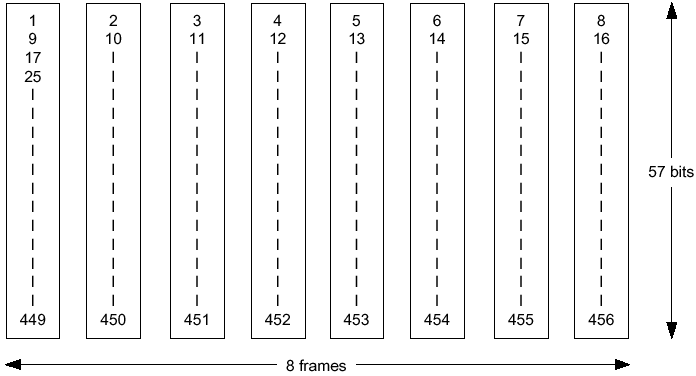
Figure 4 – Interleaving
260 bits of vocoder data are distributes according to their importance for speech decoding:
Block 1: 50 bits – very important bits
Block 2: 132 bits - important bits
Block 3: 78 bits – less important bits
First block (50 bits) is passed through a block coder, which adds 3 bits more for parity checking.
Block 2 (132 bits) and 53 bits from block coder + 4 trailing bits are passed to the convolutional coder with rate 1:2, so an encoded block size grows to 378 bits.
Simplified scheme of commercial remote energy accounting system is shown on fig. 5
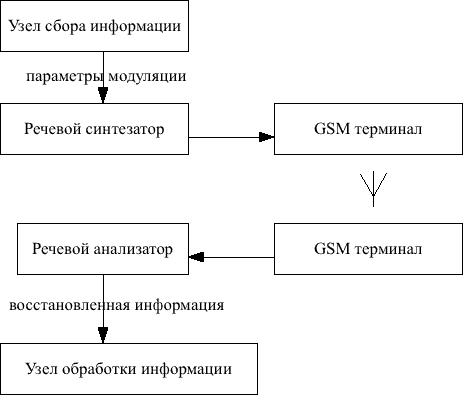
Figure 5 – Simplified scheme of commercial remote energy accounting system
The GSM vocoder modeling has been made. The next step is to develop an synthesizer of modulated speech signal.
Speech coding procedures are highly standardized at GSM 06.10, compression model shows the most significant features of speech that are transmitted with high precision - they will be used for further speech synthesizer development to modulate a signal with information to be transferred.
Further development will notice signal errors and distortions during voice packets transfer with GSM network - so some kind of error protection coding must be assumed.
The graduate work is currently under development. It'll be complete till december 2008.
© DonNTU, Snisar Nick Alex, 2008

